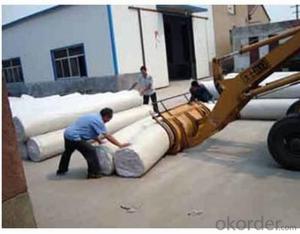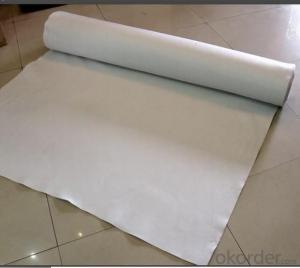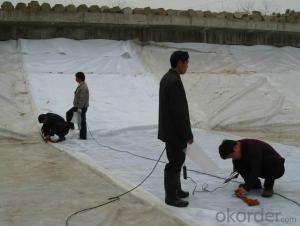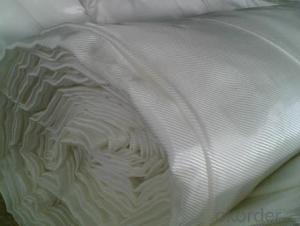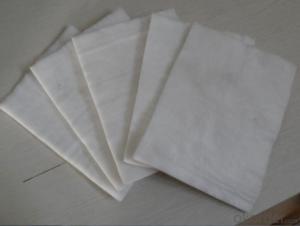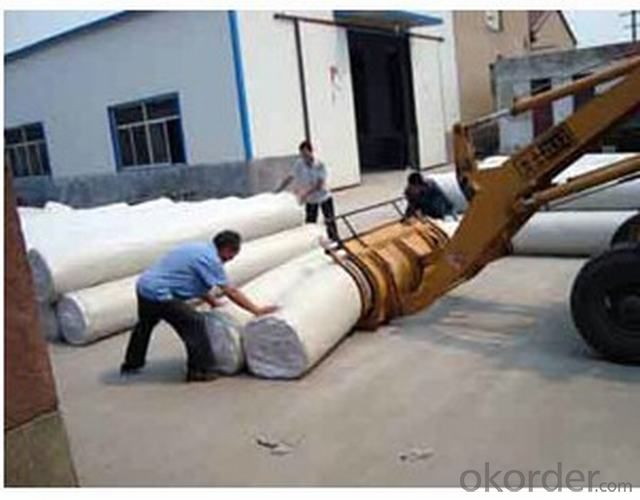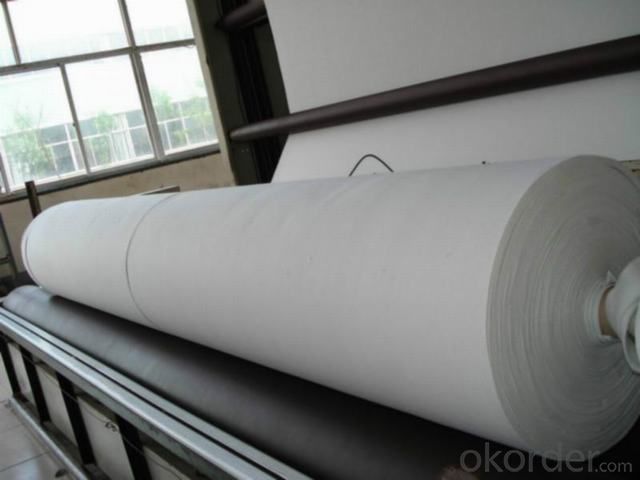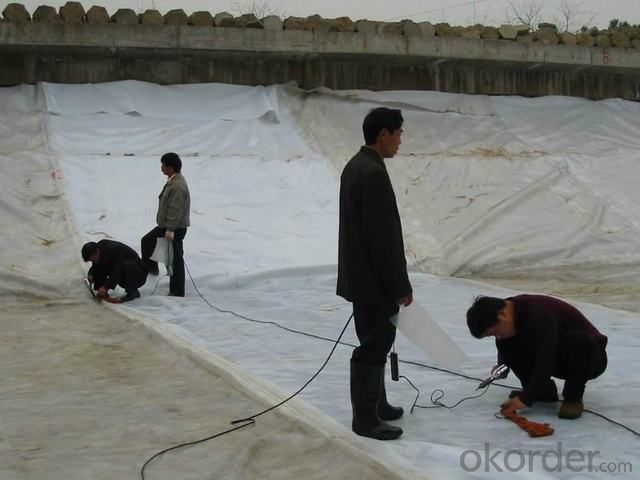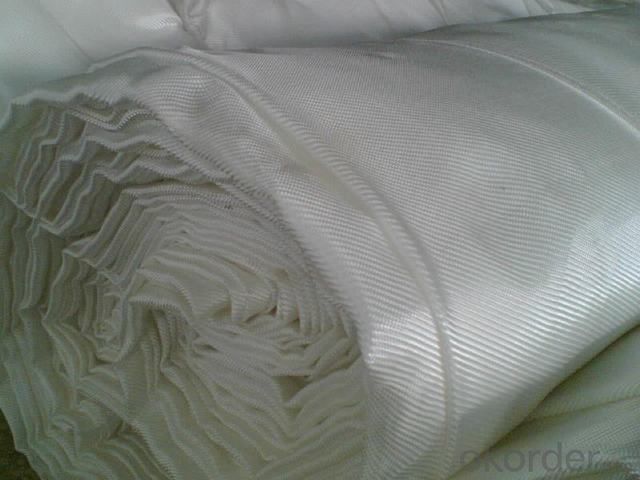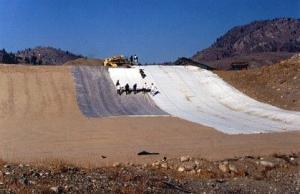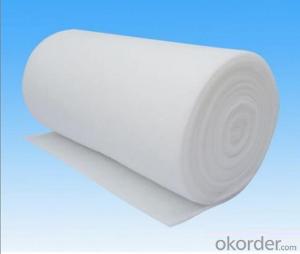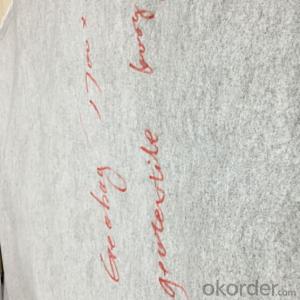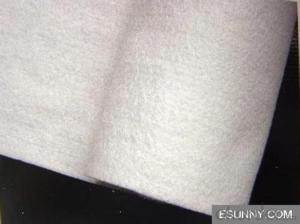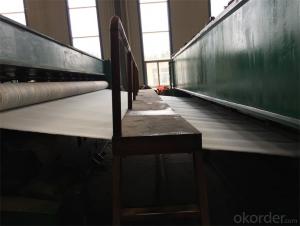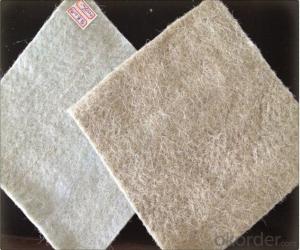Pet Geotextile - Excellent PP Woven Geotextile for Road Engineering
- Loading Port:
- Qingdao
- Payment Terms:
- TT or LC
- Min Order Qty:
- 20000 m²
- Supply Capability:
- 1500000 m²/month
OKorder Service Pledge
OKorder Financial Service
You Might Also Like
1. Specifications of PP Woven Geotextile for Road Construction
1) Weight / Mass: 75g/m2-800g/m2 .
2) Width: Within 8 m (1m-8m).
3) Length: 50m-100m/roll (as request).
4) Material: PP/PET.
5) Color: Black , white , grey, others
6) Certificate: CE/ISO9001, ISO14001 .
7) Manufacturing method: nonwoven / woven.
8) The equipment is introduced from Germany.
9) This geotextile can be made of polypropylene (PP), or polyester (PET), Polyvinyl or synthetic fiber on needle punch machine.
10) The mass is available from 75g/m² to 800g/m² and the width available from 1.0m-8m, monolayer or multilayer (reinforcement geotextiles), long fiber or short fiber.
11) Color: all kinds of color are available. The annual production ability is 10 million square meters.
12) The fabric can also be heat treated by infrared at customer's requirements. Our geotextile are UV stabilized to give protection against aging under exposure to natural ultra-violet light.
2. Introduction of PP Woven Geotextile for Road Construction
Geotextiles are composed from synthetic polypropylene/polyester fibres through a mechanical process of needling the fabric and adding, when necessary, a thermo fused process, resulting in a uniform porous structure with excellent tensile strength and chemical deterioration. Type: 1. Wovens & knitted: use various fibre types (e.g. monofilament, multi-filament, split extruded film) in different combinations. 2. Non-wovens: staple or continuous fibres that are heat treated or needlepunched to “fix” fibres relative to each other.
FAQ:
What is the main application of PP Woven Geotextile for Road Construction?
The main application of our PP Woven Geotextile for Road Construction
is as follows: The highway, railway, soil-stone dam, breakwater, airport, backfill soil of retaining wall, slope protection, etc.
Where is your main market?
Our main market is in Middle East, South America and some African countries.
What is your advantages for PP Woven Geotextile for Road Construction?
One of the largest manufacturer of Needle Punched Nonwoven Geotextile for Highway Construction with advanced equipment, big production capacity and excellent quality.

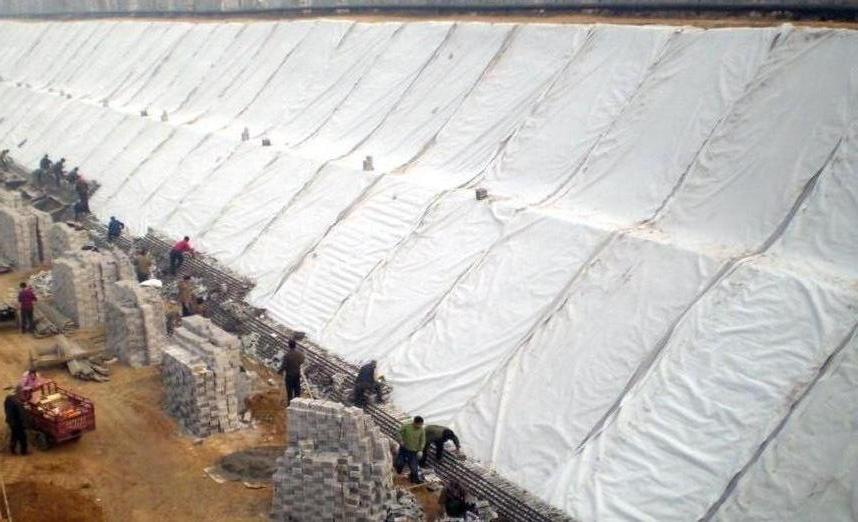
This Geotextile Fabric 101 guide contains some tips that you should know before buying. When it's time to do some landscaping or build an addition to your house, preparing the soil is an important first step. You don't want weeds, vines or even excess water to get in and contaminate your project. One very popular way to solve this challenge is by using long sheets of geotextile fabric materials. They are made with special properties that will serve to protect the investment you make in your landscaping or construction project for many years. Geotextiles are fairly straightforward, but it is important to know what they are and what features they offer before making any kind of buying decision.
What is a Geotextile Fabric?
Geotextiles are simple and permeable sheets of fabric which come in rolls and can be rolled out on the ground when a barrier is needed. These sheets are made of a special fabric that has special characteristics for your landscaping or construction needs. For example, one feature is that they help separate sections of your soil by acting as a barrier between the deeper areas and the surface (where your plants or other project arrangements are located). They can block out unwanted weeds and growth from coming to the surface and still allow drainage of excess water that you don't want in the area. The main benefits of such a fabric are that: i) your plants and landscaping won't suffer from unfair competition posed by weeds and roots, and ii) the area won't become inundated with water. It's like an additional helpful hand for your garden or construction site. Geotextile fabrics can act in this way because they are typically composed of polypropylene or polyester materials.
How Much Do I Need?
Before going out to buy a geotextile fabric, you should determine exactly how much you need. Typically, it's best to lay down enough sheets to cover the whole surface area. Remember that these sheets are rolled up. While a single roll will correctly cover all of your project's length, you will need to use several rolls to cover the whole area. Also, it is a good rule of thumb to have about 15% of each sheet overlapping above the next sheet in order to prevent any holes or gaps in between. While small breaks or ruptures in the fabric aren't a big deal, you definitely want to avoid the formation of large holes because that allows room for weeds to grow through. And that defeats the whole purpose of using the geotextile fabric.
Another good thing to keep in mind is how dense you want the sheets to be. A denser layer means less water will be able to pass through and there will be less risk of having unwanted plants come through as well. However, this will cost more and may not be needed if you have soil that is already in good condition. You should consider and make your decision about this before you start researching the different types and prices.
Bottom Line
Overall, geotextile fabric is a great tool that you should use when doing landscaping and certain construction work. It can help you on many levels, such as preventing unwanted weeds and allowing proper water drainage. Just keep in mind the type of material you need, the quality and the number of rolls required and you'll be all set with your geotextile fabric needs.
- Q: Design of interlocking turf slope protection brick directly on the geotextile, river earth side by 1: 2.5 slope excavation, began laying geotextile, grass sand and gravel, can lay it? Geotextile laying on the grassroots what are the requirements? More
- No special requirements, mainly from the role of filtering, over the water, but I, specializing in the production of geotextile, geomembrane, wish smooth
- Q: What are the specifications for geotextiles used in geosynthetic tubes?
- The specifications for geotextiles used in geosynthetic tubes typically include factors such as tensile strength, puncture resistance, permeability, UV resistance, and durability. These geotextiles are usually designed to provide high strength and stability while allowing water to pass through, effectively filtering sediment and retaining soil within the geosynthetic tube. Additionally, they are often required to withstand harsh environmental conditions and maintain their performance over an extended period of time.
- Q: Construction scheme of geotextile water filter
- Second, the design: program one: in strict accordance with the requirements of the national standard construction, 5-year warranty 1, in the smooth level of leveling the overall construction brushing JS waterproof latex or polyurethane waterproof coating, the thickness of the national standard 1 standard; Weak parts to do additional layer to strengthen; 2, do 20 ~ 30mm thick waterproof mortar protective layer, divided into two construction, layer waterproof layer of pulp interface; require nano-silicon waterproofing agent and expansion agent compound use. 3, backfill when asked not to smash the waterproof layer. 4, indoor ground practice ibid, the wall to do high 1m. Option 2: with reference to national standard requirements simple practice, the warranty period of 1 year 1, the overall construction of coated asbestos asphalt waterproof coating or waterproof cold primer, the thickness of the standard by the national standard 2; special weak parts to do additional layer to strengthen; Outside the protection, requiring the use of sticky or sticky sticky construction; 3, backfill when asked not to smash the waterproof layer. 4, indoor ground practice reference program one, the wall to do high 1m.
- Q: Can geotextiles be used in geosynthetic clay liners?
- Yes, geotextiles can be used in geosynthetic clay liners. Geotextiles are often used as a component in geosynthetic clay liners to enhance their performance by providing separation and filtration functions. They help to prevent the migration of fine particles and offer additional reinforcement to the clay liner.
- Q: Non-woven fabrics, geotextiles and geotextile geotextile
- The same material that I specialize in producing
- Q: What is the effect of highway geotextile on highway construction?
- Highway geotextile is a new type of civilized artifacts in the construction of the time, laying highway geotextile can improve the carrying capacity of the road, can improve the use of the road in the process of structural damage. As the geotextile has the role of shock absorption, and has a high elasticity and resistance to deformation, so you can make the road to bear the load and stress more uniform. In the project using Hongxiang new geotextile can also improve the rigidity of the road, help to reduce road cracks.
- Q: How do geotextiles aid in the reduction of soil settlement?
- Geotextiles aid in the reduction of soil settlement by providing a separation layer between two soil layers, preventing intermixing and consolidation. This separation minimizes the migration of fine particles and water, maintaining the stability and integrity of the soil layers, ultimately reducing settlement.
- Q: What are the considerations for geotextile selection in landfill projects?
- The considerations for geotextile selection in landfill projects include factors such as the required strength and durability of the geotextile, its ability to resist punctures and tearing, its compatibility with the waste material, and its resistance to chemical degradation. Other factors to consider include the geotextile's permeability, its ability to retain soil particles while allowing for proper drainage, and its cost-effectiveness. Additionally, the geotextile should be selected based on its compliance with regulatory requirements and standards for landfill construction.
- Q: Can geotextiles be used in coastal revetment works?
- Yes, geotextiles can be used in coastal revetment works. Geotextiles are commonly used as a component in coastal revetment systems to provide erosion control and stabilization. They can help to reinforce the soil, prevent erosion, and enhance the stability of the revetment structure.
- Q: Are there any geotextiles on the upstream dam slope?
- Available, no need to look at design requirements. But with certainly better.
Send your message to us
Pet Geotextile - Excellent PP Woven Geotextile for Road Engineering
- Loading Port:
- Qingdao
- Payment Terms:
- TT or LC
- Min Order Qty:
- 20000 m²
- Supply Capability:
- 1500000 m²/month
OKorder Service Pledge
OKorder Financial Service
Similar products
Hot products
Hot Searches
Related keywords
